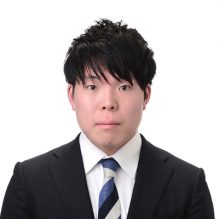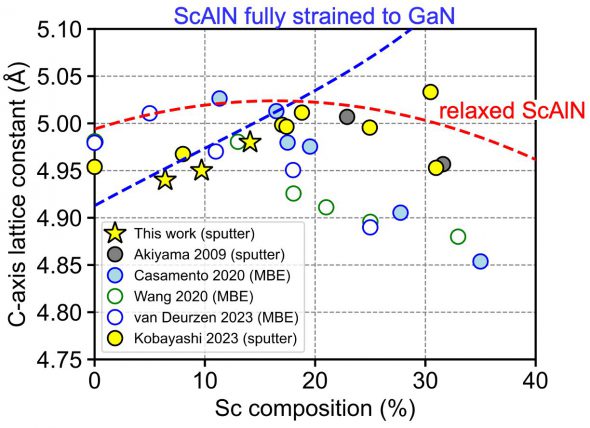-
About
- Kyoto Prize
-
Research Grants
-
Social Contributions
- Events
- News
This website uses cookies to improve the user experience. If you continue on this website, you will provide your consent to our use of cookies.
About
Research Grants
Social Contributions

Senior Assistant Professor, Graduate School of Engineering, The University of Tokyo *Profile is at the time of the award.
2024Inamori Research GrantsScience & Engineering
I would like to express my sincere gratitude for being selected for the 2024 Inamori Research Grant. I extend my heartfelt thanks to the esteemed reviewers and everyone at the Inamori Foundation for their evaluation. I will strive to conduct meaningful research and make the most of this opportunity. Thank you very much.
In this study, we investigated the structural and optical properties of ScAlN films grown on GaN by sputtering. Measurements and observations using X-ray diffraction (XRD) and atomic force microscopy (AFM) confirmed the formation of atomically flat and abrupt interfaces. It was also found that the ScAlN films coherently grow on GaN with a pseudo-lattice match. As the Sc composition increased, the c-axis lattice constant also increased, indicating that the films grow with strain on GaN. Spectroscopic ellipsometry was used to evaluate the refractive index and extinction coefficient. It was found that the refractive index increased and the extinction coefficient shifted toward longer wavelengths with increasing Sc composition. From the wavelength dependence of the extinction coefficient, the optical bandgap was estimated to be approximately 5.4–5.7 eV for Sc compositions in the range of 6–14%, and it was found to decrease with increasing Sc content. These results provide valuable insights for the development of ScAlN/GaN optoelectronic devices.

T. Maeda et al. (2024) Structural and optical properties of epitaxial ScxAl1−xN coherently grown on GaN bulk substrates by sputtering method Applied Physics Letters 125 doi:10.1063/5.0213662
T. Maeda et al. (2024) Characterization of ScAlN/GaN Toward Electronic Device Application IEEE BiCMOS and Compound Semiconductor Integrated Circuits and Technology Symposium (BCICTS) doi:10.1109/BCICTS59662.2024.10745675
Science & Engineering
